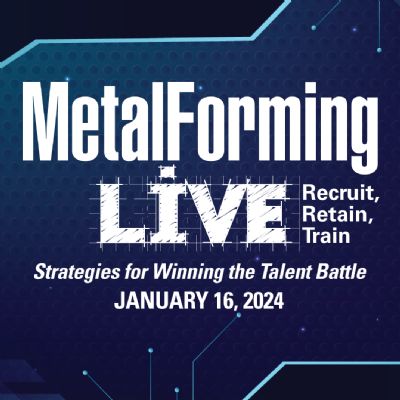 Brad Kuvin
Brad KuvinMoving Forward—Competitive Edge Factors for the Next 10 Years
August 1, 2013Comments
Mark 2013 as the year of operational efficiency and cost reduction among U.S. industrial manufacturing companies. So finds a recent survey of manufacturing CEOs by PricewaterhouseCoopers (PwC). CEOs told PwC that they’re focused on making their companies more efficient (nearly 50 percent); that they have reduced their costs during the last 12 months (80 percent); and that innovation is a top investment priority (almost half), as is matching capacity to demand (more than 30 percent).
These same CEOs also have their senses tuned to the possibility of a weakening economy—only 28 percent are “very confident” of growth in the next 12 months. So, amongst such uncertainty, how do manufacturers continue to move forward?
A new book from metalforming-company executive Jim Zawacki (GR Spring & Stamping, GRSS) and professor Donald Klein (from the Seidman School of Business at Grand Valley State University) eloquently tackles that question. They write:
“Looking backwards…gives an opportunity to use our experiences and lessons learned. It allows us to create a vision.”
In looking backward—specifically, to the economic crisis of 2008-2009—Zawacki and Klein point to lean manufacturing, continuous improvement (CI), and a positive workplace culture to helping GRSS (and other like-minded companies) out of the mire. They write of the commitment made by GRSS’ CI user groups to “learning how to adapt existing equipment to perform at higher speeds and more reliable levels.”
Their new book, titled “Moving Forward—12 Practices to Help Failing Businesses Rise from The Ashes,” follows themes set forth in Zawacki and Klein’s prior writings, a book conceived in 1999 and titled, “It’s Not Magic.” That book tells the GRSS story from 1985 to 1998.
In Moving Forward, we learn of Zawacki’s personal beliefs on a wide range of topics, including the U.S. political and justice systems, and the failings of the U.S. educational system. Manufacturing has few friends in high places, and roadblocks to success come from every direction.
In search of takeas from the book, I found some in Chapter 6, titled “Competitive Edge Factors, Mandatory not Optional.” Here Zawacki and Klein share with us the moves many successful companies, including GRSS, made during the decade ending in 2010. Then we benefit from their speculation on what the main competitive edge factors might be for 2011-2020.
We already alluded to their competitive edge factors leading up to 2010—a positive attitude and workforce culture, lean practices and using innovative technology and manufacturing methods. Moving forward, here are Zawacki and Klein’s competitive edge factors through 2020:
• Speed and agility, to respond to customer needs on short notice;
• Being current with the ever changing global market requirements;
• A workplace culture that exceeds industry standards for focusing on the customer; and
• Hiring the correct type of skilled workers, including building a strong quality team.
“The luster of the past fades with time,” says Zawacki. “Every company needs to continually reinvent itself.” Those in search of a roadmap to reinvention might just find one in this extremely readable and digestible book. Order it on Amazon.com.
Technologies: Management
Comments
Must be logged in to post a comment. Sign in or Create an Account
There are no comments posted. Management
ManagementDOL Announces Nearly $200 Million Allotted for Registered Ap...
Friday, March 1, 2024
 Management
ManagementMetalForming LIVE 2024: Recruit, Retain, Train
Monday, January 22, 2024
 Webinar
Webinar 






 Podcast
Podcast